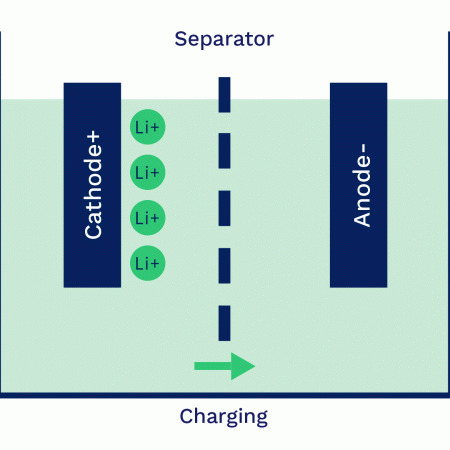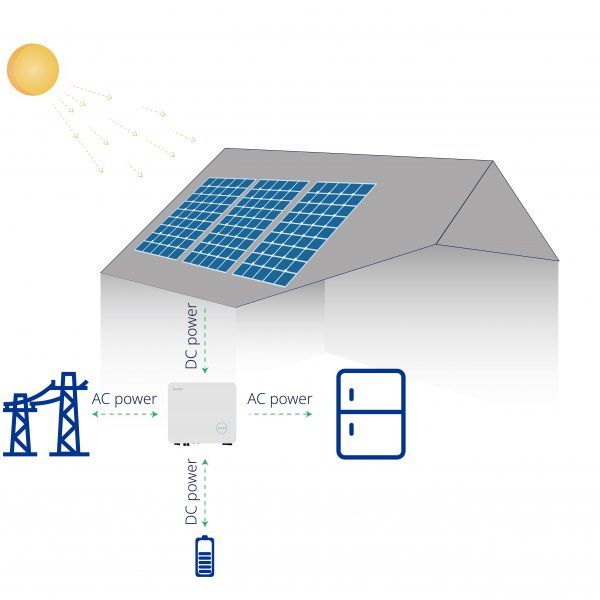What is energy storage?
Table of contents
- What is energy storage?
- Types of energy storage systems
- How does energy storage work?
- Why do we need energy storage?
- Powering a cleaner future for your home
With spiraling fossil fuel prices worldwide, a growing focus on reducing carbon emissions, and more accessible renewable energy solutions on offer than ever before, energy storage is becoming increasingly important.
But what is energy storage? What are its uses? And why do we need it now more than ever? Read on to find out.
Energy storage: Key takeaways
Energy storage comes in many forms, but batteries are the major focus of innovation and consumer interest. Batteries allow us to power devices, drive our cars, and use renewable energy sources more reliably, so their significance is only going to grow.
One of the most important applications of batteries is as part of solar power systems, where they work alongside solar panels, hybrid inverters, and other equipment to provide consistent, reliable, and clean energy.
What is energy storage?
“Energy storage” is essentially holding energy for later use.
So what are energy storage systems? While most people probably think of chemical batteries when they hear the term, there are many different forms of energy storage, such as gravitational, mechanical, and heat-based systems.
Energy storage also exists on many scales, ranging from the tiny batteries used to power microelectronics all the way up to grid energy storage systems that can help us manage electricity supplies for entire countries.
In today’s world where electricity is a fundamental part of life, energy storage is more important than ever. Many current and future types of technology, such as some types of renewable energy, mobile devices, and electric vehicles, require batteries in order to function, so energy storage technologies are a huge focus of scientific research.
Types of energy storage systems
Energy storage systems come in all shapes and sizes. Some energy storage types have been in use for a long time, while others are very new developments. Additionally, some are naturally occurring, while others are man-made. The main methods of energy storage include:
- Batteries (particularly lithium-ion batteries)
- Pumped hydroelectric storage
- Other methods, including mechanical, thermal, biological, and chemical
Of these, lithium-ion batteries and pumped hydroelectric storage make up the majority of energy storage globally.
In the era of fossil fuels
In the original days of the electrical grid, energy was almost exclusively produced by burning fossil fuels such as coal, oil, and natural gas. These fuels act as natural energy storage systems, releasing it when burned. When using fossil fuels for energy, when more power is required, we simply need to burn more fuel. But times are changing.
Storage for renewable energy
As our methods of electricity generation have evolved to include renewables like wind and solar, energy storage systems have become more important. With these methods, if the wind isn’t blowing or the sun isn’t shining, no energy is produced, so we generally use an energy storage device like a lithium-ion battery to store the energy for later use and ensure a consistent power supply.
How does energy storage work?
There are many different types of energy storage, but they all have the same essential purpose: to capture energy, store it, and release it at a later date. Different types of energy storage work in very different ways, but the vast majority of global energy storage is either in the form of electrochemical or pumped hydroelectric storage.
Electrochemical storage
The most commonly encountered form of energy storage is electrochemical storage – using batteries to store energy. While there are several kinds of rechargeable batteries, lithium-ion batteries are the most commonly used.
Lithium-ion batteries, as the name suggests, use lithium ions to store and discharge electricity. When discharging energy, positively charged lithium ions are released from the anode (negative terminal) to the cathode (positive terminal), which generates free electrons at the anode and an electrical charge at the cathode.
When the battery is being charged, the process is reversed. Lithium ions move from the cathode to the anode, where they remain until the battery is discharged.


Pumped hydroelectric storage
Pumped hydroelectric storage uses the kinetic energy of water to store and release energy. Such systems are widely used around the world to store large amounts of energy to support central grids.
A pumped hydroelectric system involves two reservoirs of water, with one at a higher elevation than the other. Water in the upper reservoir is stored until needed, then released to flow down into the lower reservoir. On its journey down, the water powers turbines that generate electricity.
Using these systems, water can be pumped into the upper reservoir to store energy, then released into the lower reservoir on demand whenever energy is required.
Why do we need energy storage?
Energy storage systems are a fundamental part of modern life, and most aspects of our lives would not exist without them.
Reliable grid energy
Various forms of energy storage are used to support major grids. This is crucial to ensure reliable electricity supply in the case of unexpectedly increased demand and/or decreased supply.
Powering devices
A huge number of electronic devices are now powered by lithium-ion batteries, from mobile phones to laptops, tools, and many other consumer electronics.
Powering vehicles
Electric vehicles are rapidly growing in popularity, and they rely on large lithium-ion batteries in the place of internal combustion engines.
Supporting renewable energy sources
Renewables are cost-effective and clean, and are set to replace fossil fuels as energy sources in the coming decades. However, renewables like wind and solar generate electricity intermittently. They need to be combined with an energy storage system to be viable on a large scale. This means that, when the wind or the sun is strongest, ‘extra’ energy can be saved and stored, then used at times when the wind or sun is weaker, guaranteeing consistent and reliable access to energy.
Facilitating energy independence
Energy storage can help people achieve energy independence. This is ideal for remote communities with unreliable grid access or anyone looking to reduce their reliance on the grid.
Powering a cleaner future for your home
As global demand for electricity and concerns about carbon emissions grow, renewable energy is going to become an increasingly significant part of the global energy landscape. For most people, the most accessible form of renewable energy is solar power, and it is one of the fastest-growing and most affordable energy sources in the world.
However, solar power is dependent on the weather. If the sun isn’t shining, there’s no power. Using energy storage helps you to maximize the potential of solar, giving you more reliable power, regardless of the weather or time of day.
Hoymiles’ hybrid inverters, designed specifically for homeowners, can store the energy — in the form of direct current (DC) — from your solar panels directly in your solar battery, and if you are importing power from the grid (which is in the form of alternating current), the hybrid inverter can also transform it into DC and store it in your battery. When you need to run your household appliances, the inverters can transform the battery power into AC to support your energy need.

Our hybrid inverters dynamically switch between four power sources: grid, solar, battery, and power generator. Specifically, they can draw from or feed into the main grid when necessary. This enables you to prioritize solar power whenever the sun shines, charge and manage your battery backup in a smart way, and let your generator take over in extreme conditions.
By offering this flexibility, Hoymiles’ hybrid inverters empower you to achieve a cleaner, more reliable, and more cost-effective energy future for your family and your home.
